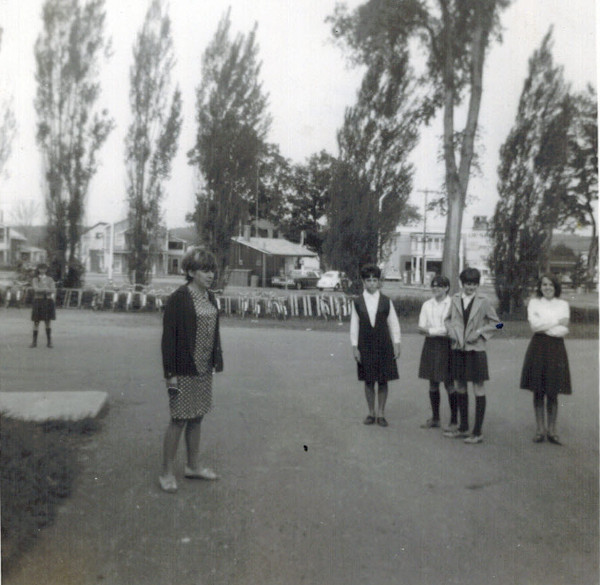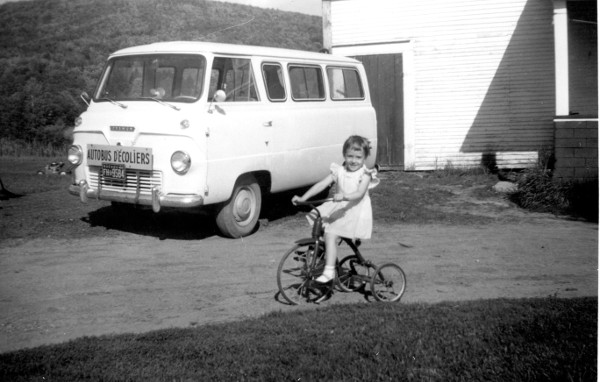A far from ideal environment
The first francophone students to attend the Ave Maria school had no library and no space to work on arts and crafts. These facilities were only added towards the end of the 1960s. Francophones were not taught English or physical education either, and extracurricular activities initiated by the school were virtually non-existent.
The classrooms were small, too, considering the number of students that each held.
Many children brought their lunches, but had to eat them in the school’s basement — not a very attractive spot according to many former students. Louise Delorme-Kelly adds that it wasn’t particularly safe down there either.
There was a big yard at the back, but the only things to play with were a few swings (several of them were unsafe) and a merry-go-round. However, an asphalt surface allowed students to play dodgeball, a really popular game at the time.
In the front there was a traffic circle for the cars that dropped students off, along with the school buses that criss-cross the countryside to bring in students from outside the village.


Teacher Lucette Breton seen talking with several students in front of the school during the 1960’s
Credit: Anita Beaulac Archives
Réal Beaulac’s minivan was adapted for school transport
Credit: Archives Héritage Sutton
From what’s been said so far, the education provided to Sutton’s Catholic and francophone children in the 1960s was far more structured and far less open to the outside world than was that offered to anglophone children. The contrast was striking.
In the 1970s the basement was finally condemned; a classroom on the ground floor was now used as a place to eat, and the gym housed physical education classes.
